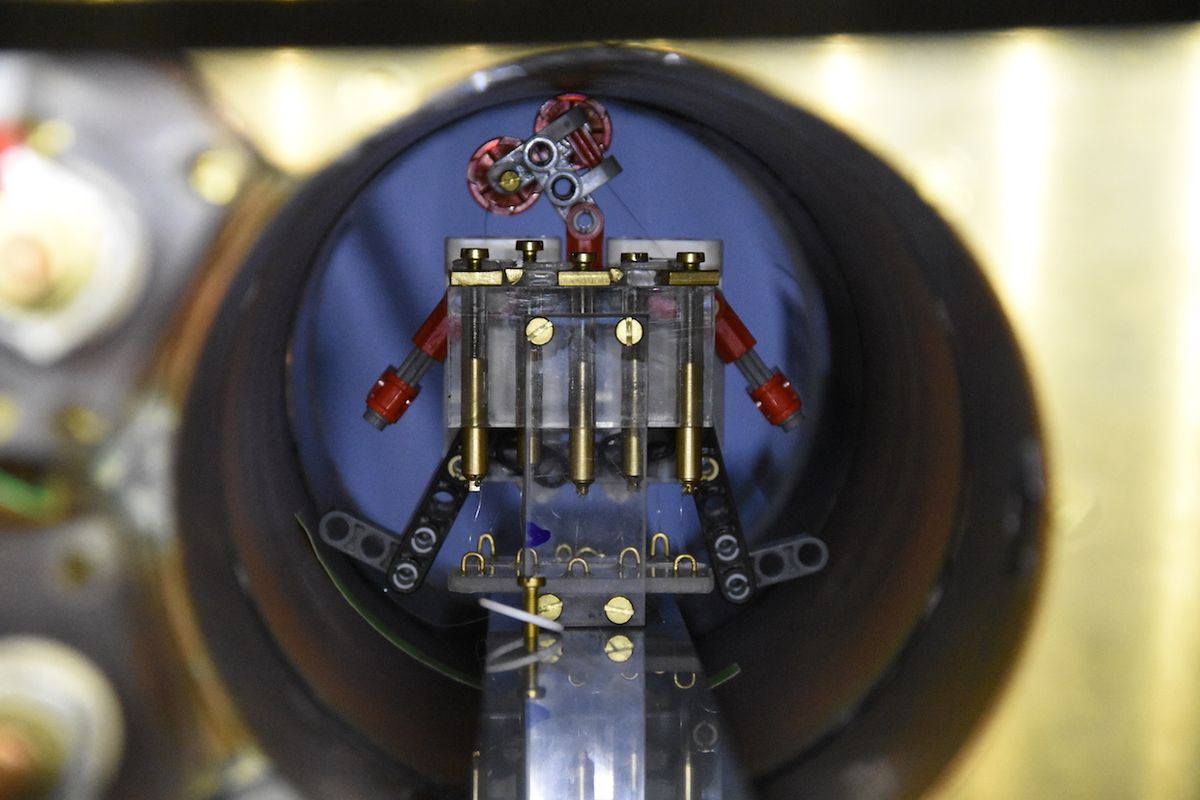There are two options for controlling a robot inside of the human body: Either you try and build some sort of intricate and tiny robot submarine with self contained propulsion and navigation, which would be really really hard to do, or you just make the robot with a tiny bit of something that responds to magnetic fields, and control it externally with some big magnets. The latter approach is vastly less complicated, but it has one major drawback, which is that it’s very hard to manage multiple robots.
Here’s the problem: Magnetic fields, being fields, aren’t easily constrained to specific areas. Realistically, if you’re using something like a clinical MRI scanner to create a magnetic field, whatever gradient you give the field will affect everything inside of the MRI, whether you’ve got one single microbot or a vast swarm of them. If you want two different robots to do two different things, you’re out of luck.
One potential way of getting around this is by making each of your robots slightly different, such that consistent control inputs have inconsistent effects on each robot. But for homogenous robots, it’s much more difficult. In a paper published today in Science Robotics, researchers from Philips, in Hamburg, Germany, describe a technique that can use magnetic fields to selectively actuate individual microbots, or individual components of a robot, even if they’re all made of the same stuff and located within the same field.
Please enjoy this utterly charming explanatory video from the researchers:
Coooool.
Here’s how it works: The global magnetic field inside of the device has a hole in it, called a free field point (FFP), where multiple magnetic fields (each generated by a separate coil) meet up. Inside of the FFP, the magnetic field gradient is low. This doesn’t help you move things, but it does help you not move things, because you can “lock” everything that isn’t in the FFP in place by cranking up the field gradient. Then, you apply a gentle rotating magnetic field, which spins anything inside of the FFP and not locked down. By moving the FFP around, you can select which things are locked and which things are free to rotate.
In this case, the “lock” is the screws being tilted sideways by the field such that they can’t rotate, while the FFP is a region of zero tilt, meaning that the screws can rotate freely. The hardware used in this study was able to individually actuate screws as close together as 3 millimeters.

The researchers suggest a whole bunch of different ways in which this technique could be of practical, immediate use:
One class of applications is based on mechanisms driven by several screws that are controlled individually. In orthopedics, this could be implants, whose shape can be adapted to the healing process. In applications such as limb lengthening or early-onset scoliosis, a mechanism based on several controllable screws may offer higher flexibility in extendible prostheses or growth rods. In addition, the approach can be useful in microfluidics, where simple and tiny magnetic pumps and valves may be envisioned that can be individually actuated without an electrical or mechanical link.
Another class of applications is related to simple micromachines for local therapy delivery, such as remote-controlled drug release from a distribution of injectable magnetic micropills. Remotely switchable radioactive seeds are a special case of this class. Switchable seeds would enable the use of sources with longer half-life or higher dose rates because the radiation can be switched off after the desired dose has been applied. Besides, migrating seeds ending up too close to healthy tissue or sensitive organs could be switched off.
Using a helically slotted shield, directional seeds with remotely adjustable radiation direction could be built. These would allow further improvements in dose painting and sparing of healthy tissue. In addition, magnetic manipulation has been shown to be scalable to the micrometer regime. Using a catheter, seeds of this size could be discharged into the bloodstream of a tumor-feeding artery so that they are carried into the tumor and embolize small vessels. After localization via imaging, only seeds that ended up in the tumor would be activated remotely.
“Spatially Selective Remote Magnetic Actuation of Identical Helical Micromachines,” by J. Rahmer, B. Gleich, and C. Stehning from Philips Research in Germany, was published on Wednesday in Science Robotics.
[ Paper ]
Evan Ackerman is a senior editor at IEEE Spectrum. Since 2007, he has written over 6,000 articles on robotics and technology. He has a degree in Martian geology and is excellent at playing bagpipes.



